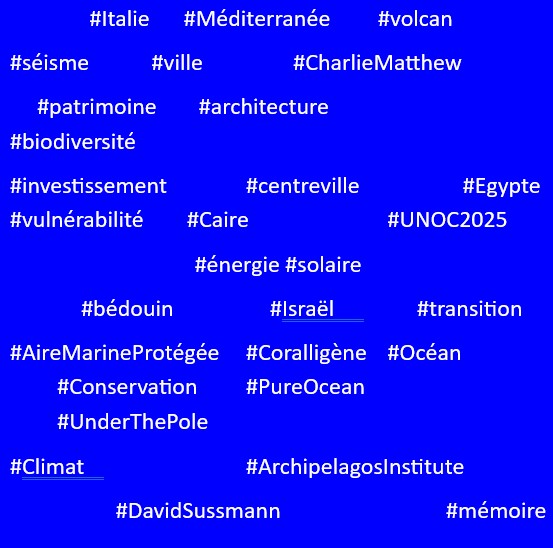When the Mediterranean trembles, rebuilds, or ignites, it always speaks of our collective choices. In its cities, deserts, and seas, balances are constantly renegotiated. Observing these movements is to grasp the vitality and contradictions of a space never fixed, where each tremor already outlines a forthcoming transformation.
Summary of articles published this week in 22-med, available in the 11 languages used on the site. To read them in full: subscribe and support an independent media.
Paolo Rumiz, seismograph of the Italian Mediterranean
“ And now, we silence ourselves and listen*. ” Thus begins the new book by Paolo Rumiz, who had the brilliant idea to follow the fault lines, architectural, that traverse Italy. To get as close as possible to what comes from the depths and shakes, sometimes very brutally, the Italian peninsula with earthquakes and volcanic eruptions.
Cairo wants to reconnect with its former splendor
The historic part of Cairo, called Cairo khédivial*, is entering a new phase of urban revitalization, marked by the gradual elimination of informal constructions and the visual disorder accumulated over time. Since its launch in 2014, the strategic project for the rehabilitation of downtown aims to restore the architectural and heritage charm of its emblematic buildings, to redefine public space, and to revive the rich urban heritage of Cairo's historic neighborhoods. However, this desire for enhancement is already facing concerns raised by the growing influence of private investors on the heritage heart of the capital.
The Negev in overheating: the rise of solar energy crystallizes tensions
Under the scorching sun of the Negev desert, Israel is playing a decisive part in its energy transition. With ambitious goals and one of the best sunshine rates in the world, the region has become the heart of a true energy gold rush. Everywhere, fields of photovoltaic panels, solar concentration towers, and infrastructure projects are rising to supply the national grid. But behind this appealing image, tensions are multiplying. Bedouin communities are denouncing a new dispossession of their lands, and ecologists are warning about the damage to fragile biodiversity. As for landscape lovers, they are worried about the unique beauty of the desert being sacrificed.
An unexpected discovery off the coast of the Foúrni islands
Greece has just created the largest marine protected area in the country: 430 km² around the Foúrni archipelago, to safeguard recently discovered coral reefs. These underwater animal forests, essential to biodiversity, were revealed thanks to the project “Protecting Aegean Coralligenous” led by Tim Grandjean*, supported for four years by the French endowment fund Pure Ocean. It all started from clues given by coastal fishermen, witnesses to marine habitats they suspected to be unusual.
